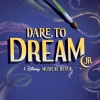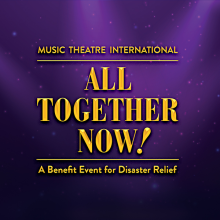What's with all the MIC's
The question you're answering.
Login to flag as inappropriate
We all probably do it, peruse through the assorted YouTube offerings, while we begin our planning and prep-work for a show. On more than one occasion I find myself wondering..."Why do all these shows insist on using microphones?"Whether it's the hand held types being passed from cast member to cast member, those on stands at the front edge of the stages, or the assortment of lavaliers etc that cause the leads to "blare out" while the supporting characters aren't heard at all. It seems that near every school (that chooses to film and post their work) has some type of wireless MIC setup to "enhance" their productions. Are they really needed? Or is this simply a case of "trying to look like the pro's" gone a little too far? For me.. they tend to detract from the performances rather than enhance them. What's your take?
7 Answers
Mics certainly can create problems, especially in balance between the voices that are amplified and those that aren't. That being said, as a vocal music teacher of Middle School kids, many of them have developing voices that do not project very well, despite being of good quality. Pushing the voice at that age will only damage it. Using only a piano as accompaniment might solve the problem, but recorded accompaniments seem to require some volume, and a live ensemble , if it includes percussion and brass, is quite difficult to sing over at that age. Also, while my show choir in school sings ensemble numbers without mics, those numbers that have soloists usually require those soloists to be miked, even with just piano accompaniment. In venues where miking is not possible, I select louder singers for the solos. However mics allow those singers who sing beautifully yet on the softer side,an opportunity to shine.
Well, the thread is pretty much about this. In our venue (350 seats) we tend to reject the idea of MICs, and instead rely on teaching the kids to project. As noted the "on stage monitors" are very important in order to get the audio balanced so that the actors can hear the music, and the audience can hear the voices.
This is, perhaps, the crux of the matter. I suspect that many schools (I was refering to the "Junior" titles) are opting to add MICs and amplifying their actors, versus adding monitors and balancing the sound that way. Ultimately it is my belief that the youth are better served without the MICs, but I concede the point that this will be "venue dependent".
Either way it does make for an interesting discussion. "Cool"
Andrew,
I agree that projection is much better than body-miking. I, unfortunately, am "blessed" with one of those venues that just eat sound. I much prefer, however, a couple of well placed plate mics, or a set of hanging mics, to trying to shuffle 14 body mics.
I mean, who has that many hands for a sound board?
Staff Answer
Wow! You must have really good acoustics at your facility! We were in a small blackbox theater for our first performance last year with no mics, and the kids were often drowned out by the music. When we turned it down low enough for the audience to hear the children well, the kids couldn't hear the music. It's a shame to put kids through months of rehearsal and not have them be heard. And the worst thing in the world for young, developing voices is for them to "scream" the music a la Annie style. This year we're performing in a fabulous 500-seat theater--just for fun! We won't skimp on sound!
Well we do have "on stage monitors" (well.. in the rigging pointint @ the stage), and yes we can tell when they aren't turned on as the cast has trouble hearing. That being said, we've done numerous shows without the need to mic the actors.
Although during our recent Seussical run, I think my daughter would have loved a MIC when one of the scrollers on the lights started to malfunction and "Flap-Flap-Flap" (quite loudly) during "Notice Me Horton".
I'll count my blessings.
It depends on the theatre...at Dare to Dream we don't use wireless mics in our space. Instead we have 3 floor mics or 2 hanging mics. We use the mics to balance the sound...because recorded music often drowns out the kids voices in our accustically designed space (an old church)
When we perform in alternate spaces, mics become imperative because some spaces just don't carry sound and then the audience can't hear the action. In such cases we still work to balance the sound so that the are no "blaring" voices. I think our theatre does pretty well with it, but every show and every space is different.
























